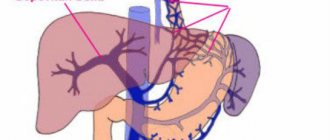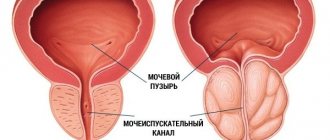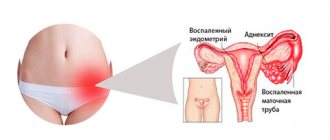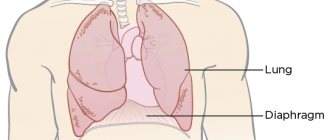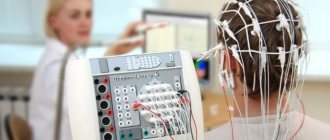- home
- Services and prices
- Phlebology
Varicose veins (VV) is a fairly common disease that affects both men and women. It can affect the lower limbs of a person, as well as deep veins, leading to the development of thrombosis and post-thrombophlebitis disease.
Spider veins that appear on a person’s legs as a result of the development of the disease become the reason that he begins to feel unattractive. In addition to external ones, there are also internal manifestations of explosives, which are expressed in the appearance of discomfort and pain in the calf muscles of the leg. The development of the disease increases the risk of other pathologies of the circulatory system.
The key to success in the fight against pathology lies in timely diagnosis and competent treatment. A big mistake on the part of a person is the independent use of various ointments and creams, which in most cases do not bring the desired effect. As a result, time was lost that could have been spent on proper and effective therapy.
In order to get rid of varicose veins, you need to solve the following problems:
- Elimination of symptoms.
- Removal of varicose veins.
- Prevention of the development and reappearance of explosives.
Only a highly qualified specialist with sufficient experience in the treatment and prevention of pathologies of this kind can successfully cope with each of the above tasks. These are the specialists who work at the Yuzhny Medical Center. The high level of qualifications of doctors in combination with the latest equipment will make it possible to make the correct diagnosis and carry out competent therapy, guaranteeing the absence of progression or recurrence of varicose veins of the lower extremities.
Symptoms of varicose veins
Symptoms of a disease are signs that clearly indicate its development. They are divided into:
- Subjective: Mild and aching pain in the calf muscles.
- A burning sensation and itching along the veins affected by varicose veins.
- Heaviness in the legs, increasing towards the end of the day.
- Skin hyperpigmentation.
- Increased fatigue of the lower extremities.
- Trophic venous ulcer of the leg.
- Pain in the calf muscles, aggravated by walking.
- The appearance of swelling in the lower legs and feet.
- Varicose veins of the saphenous veins, which are clearly visible even without the use of special equipment.
What veins look like
The very first warning sign of problems with the veins is swelling of the lower extremities at the end of the day. Swelling is especially pronounced if a person spends most of the day standing on his feet. It can disappear in the morning after a night spent resting.
However, if you do not pay due attention to this problem, the condition can worsen significantly. Intradermal veins in the legs with varicose veins become dark blue, protruding above the surface of the skin of the legs and feet. Outwardly, they look like bunches of red grapes that are overripe. Such external manifestations of pathology are accompanied by pain in the calves, a feeling of heat in the legs, swelling and cramps in the calf muscles. Over time, these symptoms are accompanied by a change in the appearance of the skin.
Preventive measures
To minimize the risk of developing venous pathologies with a congenital or acquired predisposition to them, it is enough to follow some rules:
- Regular visits to the doctor with an in-person examination;
- Timely treatment of concomitant and provoking diseases;
- Quitting bad habits (smoking and alcohol);
- Monitoring weight dynamics and maintaining it at a stable level;
- Regular warm-ups during sedentary or standing work;
- Sports activities (joint exercises, aerobics, yoga, swimming, cycling, jogging);
- Selection of alternative methods of contraception (with long-term use of hormonal drugs);
- Rationalization of nutrition and vitamin therapy;
- Taking venotonic drugs (only as prescribed by the attending physician);
- Compression therapy (wearing special stockings and tights);
- Visiting therapeutic massage and physical exercise (with the permission of the attending physician);
- Selection of comfortable shoes for everyday wear;
- Monitoring stool and bowel function (constipation often provokes a rise in intra-abdominal pressure and disrupts the movement of blood to the lower extremities);
- Drink plenty of fluids (to prevent the formation of blood clots);
- Choosing a comfortable sleeping position (it is optimal for your legs to be raised from the surface of the bed by at least 15 cm).
The main preventive principle is to contact a phlebologist if alarming symptoms of disease are detected.
- Visit your supervising doctor if you feel: The occurrence of edema without objective reasons;
- Dull arching pain in the legs that occurs when standing;
- Muscle cramps of a transient short-term nature;
- Any changes in skin tone in certain areas of the lower extremities;
- The presence of manifestations of dermatitis, eczema or trophic ulcers.
Depending on the type and complexity of the identified disease, patients are prescribed conservative or surgical treatment.
Causes of varicose veins of the lower extremities
VV of the lower extremities can develop under the influence of a number of factors and circumstances, the main ones being:
- Pregnancy. This is a key risk factor for the disease. This explains the fact that varicose veins occur several times more often in women than in men. In this case, the disease develops under the influence of an increase in the volume of circulating blood and compression of the retroperitoneal veins of the pregnant uterus.
- Obesity. The connection of this condition with the development of VV has been proven by a number of studies. At the same time, a direct connection was found between increased body weight and an increased risk of developing pathology.
- A lifestyle characterized by prolonged static loads with regular heavy lifting or prolonged immobility in a standing or sitting position.
- Dishormonal conditions. Their role in the development of the disease has increased significantly over recent years. This is due to the widespread use of hormonal contraceptives, the spread of hormone replacement treatment for osteoporosis and during the premenopausal period
- Heredity. The role of this factor in the development of varicose veins on the legs has not been unambiguously confirmed today.
- A disorder of the valvular apparatus of the veins, leading to a downward flow of blood under the influence of gravity every time a person stands up. The muscles that are located around the deep veins contract as you walk. These veins are subject to emptying, causing venous pressure to increase. Blood enters the superficial veins through communicating vessels with insufficient valves. As a result, they are filled with blood, which leads to their stretching and expansion (varicose veins).
Are spider veins also a manifestation of varicose veins?
Spider veins are clusters of thin, purple or red thread-like vessels that appear around the knees or ankles. Sometimes such vascular “webs” can appear on the face, near the nose. These vessels cannot be called varicose veins, by definition. In fact, these are slightly dilated venules (vessels connecting capillaries to the veins themselves), which are located close to the surface of the skin.
Such dilated venules appear due to increased levels of female sex hormones in the blood and are often found in women taking oral contraceptives. But venules can expand even in the presence of varicose veins of larger veins that do not appear externally.
Classification and stages
Like any disease, VV has several stages, differing from each other in the degree of spread of the pathology and symptoms. Among them, the following stages are distinguished:
- Initial (or compensation).
- Second (or subcompensation).
- Third (or decompensation).
A detailed description of each stage can be found here.
It is worth noting that complications can occur at any of the above stages, but their greatest likelihood is inherent in the last two. VV can serve as an impetus for the development of diseases such as:
- Thrombophlebitis.
- Erysipelas.
- Deep vein thrombosis.
- Trophic eczema.
A visit to a specialist, made at the first signs of the disease, will help reduce the risks of worsening the situation and begin removing varicose veins. You should not ignore even minor symptoms, because this can lead to undesirable and extremely negative consequences.
Diagnostics
Diagnosis of varicose veins, the symptoms of which are described above, poses the following tasks:
- Determining the presence of pathology in each individual patient. It often happens that people who do not have varicose veins are confident in their presence, and vice versa. However, only an experienced phlebologist, based on an external examination and a series of comprehensive studies, can make an accurate diagnosis.
- Establishing the type characteristic of venous pathology. The doctor determines exactly which veins have undergone pathological damage, and also establishes the extent of this damage and possible or already occurring consequences.
- Prescribing the correct course of treatment. Based on the diagnosis and the characteristics of each specific organism, the attending physician makes a choice in favor of one or another treatment or a set of therapeutic measures.
- Assessment of the level of effectiveness of therapy, which is carried out by the attending physician during the elimination of the disease or after the patient’s complete recovery.
The main methods for diagnosing VV include:
- Plethysmography.
- Thermography.
- Magnetic resonance imaging.
- Ultrasound angioscanning.
- Computed tomography.
- Clinical studies: conversation with the patient, his external examination and manual examination.
- Radionuclide phlebography.
- Intravascular ultrasound.
- X-ray phlebography.
Most often, it is enough for a professional specialist to conduct a clinical examination and ultrasound angiography in order to diagnose varicose veins in the legs. At the Yuzhny clinic, you can undergo a full examination in order to make an accurate diagnosis by an experienced phlebologist. Our specialists work closely with clients, clearly explaining to each of them the specifics of the disease and possible ways to combat it.
Treatment methods
Modern methods of treating varicose veins are aimed at reducing the degree of disability and trauma, which contributes to a faster recovery of the patient. Main therapeutic techniques include:
- Sclerotherapy. This method involves introducing a special medication into the lumen of varicose veins of the legs, causing a chemical burn of the internal venous wall. This leads to their gluing and cessation of pathological blood flow through them. Can be used alone or in combination with other types of manipulation. It is carried out without prior anesthesia with skin punctures using a thin needle. The duration depends on the scale of the lesion.
- Foam sclerotherapy, which involves the preparation by a specialist of a special medication of foam that can use an impressive area of the internal walls of the affected venous vessels. Used to treat large diameter veins.
- Endovenous laser coagulation, which is performed using a laser device on the main trunks of the leg veins and allows you to stop the pathological flow of blood through the affected veins due to the burn of their inner walls and their subsequent gluing. Laser treatment for varicose veins is available at the Yuzhny Medical Center.
- Miniphlebectomy, aimed at eliminating subcutaneous nodes and tributaries enlarged by varicose veins through punctures of the skin. It has excellent cosmetic effects and is used alone or in combination with other therapeutic methods under local anesthesia.
- Elimination of incompetent perforating veins, performed for the prevention of venous insufficiency and treatment of trophic disorders, including ulcers.
- Combined phlebectomy, which is a combination of some methods of treating veins, based on the indications and nature of venous pathologies.
Yuzhny Medical Center offers its clients modern approaches to the treatment of varicose veins. Qualified specialists work here, ready to conduct a competent examination in order to make a diagnosis and carry out effective treatment, more about which you can read here.
Medical history
The history of varicose veins began in the times of Byzantium, Ancient Egypt, and Old Testament Israel, as evidenced by archaeological excavations. In different eras, people tried to treat this disease, in particular, Avicenna and Hippocrates did this. In the second half of the 19th century, Russian and German doctors started talking about the effectiveness of ligation of the great saphenous vein.
This is what varicose veins of the lower extremities look like
At the beginning of the 20th century, very traumatic operations were carried out in Russia, during which the tissues of the thigh and lower leg were deeply dissected, veins were damaged, which were then ligated, nerve endings, arteries, and lymphatic ducts. Healing took a very long time, leaving large and noticeable scars.
In 1908, foreign doctors proposed removing the great saphenous vein and introduced a metal probe, which reduced injury to the patient. This was the first step towards minimally invasive surgery.
The breakthrough came when it became possible to take X-rays. It was first performed for varicose veins in 1924. At the same time, contrast based on strontium bromide solution was injected into the vein. Then ultrasound appeared, and the technique was further improved.
In the late 90s of the 20th century, laser therapy appeared, which became a modern breakthrough in the treatment of varicose veins.
Watch our video in which a doctor from Dr. Gruzdev’s clinic talks in detail about what varicose veins are:
Complications with varicose veins
It is worth understanding that improper treatment of the disease or complete refusal of it can lead to complications. The latter appear not only in cosmetic defects of the lower extremities, but also in more serious forms. Among them:
- Trophic eczema, which subsequently develops into an ulcer.
- Thrombotic lesions of the venous system, including thrombophlebitis of the superficial veins and deep vein thrombosis of the lower extremities.
Venous blood is a kind of “sewer” for the body’s tissues and is saturated with substances and products of cell metabolism that are relatively harmful to the human body. Cells of the skin and subcutaneous tissue, as well as muscles and bones, discharge products of tissue respiration and other waste material into the venous system, which carries them to the heart, lungs, kidneys and liver. In case of disturbances in the functioning of the venous system, the content of these products in the tissues of the body increases.
A vein dilated by varicose veins leads not only to an increase in the concentration of harmful products in the tissues, but also to an increase in their swelling. This disruption of the outflow of harmful products, combined with swelling observed over a long period of time, leads to the death of skin cells and subcutaneous tissue and their subsequent replacement by venous eczema, represented by a dense and dotted structure of a dark color. The death of the surface layer of the skin is the cause of trophic ulcers.
Phlebeurysm
Varicose veins are overstretched, irregularly shaped, tortuous venous vessels that have lost their elasticity.
They are increased in length and width and look like twisted blue strands that are visible under the skin. Veins become this way when the venous valves are missing or for some reason cannot perform their functions. If the valves do not work properly, blood flows backward through the veins, pooling in the lower extremities. As a result, the veins lose their natural shape, and a chain of various complications begins.
Prevention
Varicose veins on the legs, which are treated today using various methods, can be avoided by following preventive measures. Due to the fact that the risk of developing VV is much higher in women, it is they who need to not ignore the prevention of this disease. However, men should also not ignore preventive measures aimed at preventing the development of varicose veins in the legs. Key activities include:
- The use of local preparations (gels, ointments, creams) that help strengthen the walls of blood vessels, optimize the functioning of valves, reduce the risk of blood clots, eliminate swelling and heal wounds.
- The use of knee socks, tights, stockings and elastic bandages that have a compression effect. This is an excellent tool in the fight against varicose veins. These products can be purchased in specialized stores after consultation with a doctor, which is necessary due to the relative difficulty in independently determining the required type of compression garments.
- Specific exercises performed on a daily basis. They are able to stop even the dilation of blood vessels that has already begun. It should be borne in mind that if you have a tendency to BB, you will have to give up heavy physical activity, but in no case should you ignore an active lifestyle. For example, light jogging, swimming, yoga and skiing help maintain healthy leg veins.
- Preventive tablets for varicose veins are recognized as a more effective method of preventing VVs than the use of local drugs. However, any oral medication should be used only as directed and under the strict supervision of a competent specialist.
In order to prevent the situation from worsening, you should stop self-medicating at the first manifestations of the disease and consult a doctor. This will make it possible to make a correct diagnosis in a timely manner and prescribe adequate treatment, which will stop the progression of the disease and reduce to zero the risks of developing other pathologies.
Risk factors for developing varicose veins
- Heredity.
Weakness of the vein walls is passed on to children. If both parents have varicose veins, then the child has a 90% chance of getting the disease. If only one has 60%. - Pregnancy.
During pregnancy, varicose veins are provoked by three factors:- Changes in hormonal levels - the production of large amounts of progesterone. This hormone relaxes the muscles, so the veins become more vulnerable.
- Pressure of the uterus, which increases in size. In this regard, the outflow of blood from the legs worsens.
- An increase in the amount of blood by an average of 20-30%. Venous valves cannot withstand such stress, especially if they were naturally weak.
- Obesity and simply being overweight
, which is accompanied by lipid metabolism disorders. This process causes vascular pathologies. - Poor nutrition
– predominance of fried foods, fatty foods, fast food, animal fats, milk fats. Uncontrolled consumption of salt and sugar, semi-finished products. - Hormonal background
- a surge in hormone production can weaken the muscle layer of the vein walls, which expands the lumen of the vessel and prevents the normal closure of the valves. - Incorrect clothing
, which negatively affects blood circulation. Pants that put pressure on the waist, tight belts, and too-tight jeans, the fabric of which lacks elasticity, have a negative impact on the condition of the veins. - High-heeled shoes
, which cause the veins to work to the limit. This is due to the fact that the load is unevenly distributed - the main part of it falls on the forefoot, the vessels of which are under too much pressure. Women who wear high-heeled shoes usually note that in the evening their feet hurt, ache, and swell. These are the first signs of beginning varicose veins.
FAQ
Very often people are interested not only in the question of how to treat varicose veins. Many patients suffering from this disease are interested in what they can do and what they cannot do, in order not to worsen their health condition and not provoke the emergence of other health problems. Below are frequently asked questions of interest to people with VV.
Is it possible to get vaccinated against coronavirus if you have varicose veins?
The answer to the question of whether coronavirus vaccination is allowed for varicose veins is yes. This pathology is not a limitation for vaccination against COVID-19 in the absence of its exacerbation. If a person does not suffer from acute thrombophlebitis, then this refers to decompensation of varicose veins of the legs, and he is not prohibited from being vaccinated against coronavirus infection.
Is it possible to drink coffee if you have varicose veins?
Caffeine has the ability to increase blood pressure and increase heart rate, which are unfavorable factors for fragile, swollen veins damaged by varicose veins. Coffee has the following effects on blood vessels:
- Increased load on the vein walls.
- Increased blood pressure.
- Short-term venous expansion.
Therefore, with varicose veins, you can drink coffee, but not exceeding the daily norm. Completely giving up your favorite tonic drink will not lead to the restoration of veins affected by pathology, so you should not torture yourself and not drink coffee. You just shouldn't drink more than 1-2 cups a day. It is also recommended to dilute coffee with milk.
Is massage allowed?
Comprehensive treatment of varicose veins at an early stage includes massage. However, it requires proper execution.
For varicose veins, you can only do a light massage of the lower extremities. It is also indicated for patients with uncomplicated forms of varicose veins.
It is advisable to perform a professional manual massage for patients with varicose veins, but it is imperative to take into account all the features of the course of the disease. It is recommended that you consult with a specialist before you begin massaging the area where the veins are affected by varicose veins.
Is it possible to warm your feet?
When the legs are heated, the veins expand, blood circulation increases and the load on the venous walls only increases. This can worsen the already poor condition of varicose veins. This is why it is recommended to limit hot baths for patients with varicose veins. It will be better to reduce the temperature of the water from hot to warm, which will not cause vasodilation and will not lead to a worsening of the person’s condition. You should always remember that consultation with a specialist is necessary regardless of whether we are talking about hot baths or vaccination for varicose veins.
Are running and squatting allowed?
Experts recommend starting jogging at the first signs of developing VV. It is important to ensure that these activities are systematic. During running, the blood is saturated with oxygen. Therefore, it is better to give preference to jogging in the forest or park, where the air is always clean.
However, you should adequately assess your capabilities and endurance, and avoid excessive stress, which is contraindicated for varicose veins. It is important to monitor a gradual increase in loads that do not exceed values that are comfortable for the body.
A person with BB should not feel tired while jogging. Only short-distance running using compression socks is allowed. In case of thrombophlebitis, jogging should be avoided. The admissibility of running and squats with pelvic varicose veins should be discussed with your doctor.
What is the best treatment for varicose veins?
Today there is no clear answer to the question of which therapeutic method is the most effective for varicose veins. The fact is that success in treatment depends on a number of factors that must be assessed by a qualified specialist in each specific case. Only after this can they make a final decision on prescribing one or another treatment for IV.
In order to prevent the situation from worsening, you should stop self-medicating at the first manifestations of the disease and consult a doctor. This will make it possible to make a correct diagnosis in a timely manner and prescribe adequate treatment, which will stop the progression of the disease and reduce to zero the risks of developing other pathologies.
Innovative treatment of varicose veins at various stages in the center of Moscow
During the consultation, an individual treatment regimen is selected for each patient suffering from varicose veins of the lower extremities, taking into account the stage of the disease. In the early stages, medical conservative treatment with the use of medications, electromyostimulators, compression stockings and sclerotherapy is quite sufficient. Modern treatment of varicose veins in the early stages of pathology can be implemented by gluing veins. For this purpose, one of the best medical techniques used today is sclerotherapy, the essence of which is the removal of dilated veins by introducing into them special drugs, the so-called sclerosants. In advanced stages of varicose veins that are not amenable to conservative treatment, non-surgical treatment is performed ( Venefit™ RFO procedure
or EVLO
).
Treatment of symptoms of varicose veins with thermal methods in our center
These innovative techniques are currently the leading, most advanced and are used in the best phlebological centers around the world, including Moscow and the Moscow region. Good phlebologists often supplement the procedure of radiofrequency (RFO) or laser obliteration (EVLO) of the saphenous veins with miniphlebectomy and scleroobliteration using the Foam-Form method.
